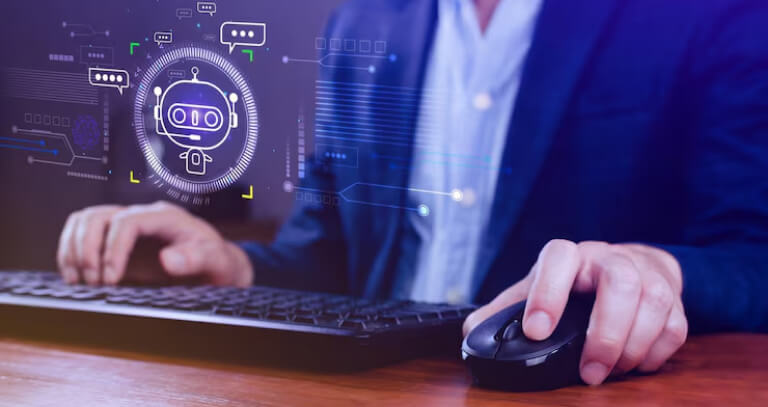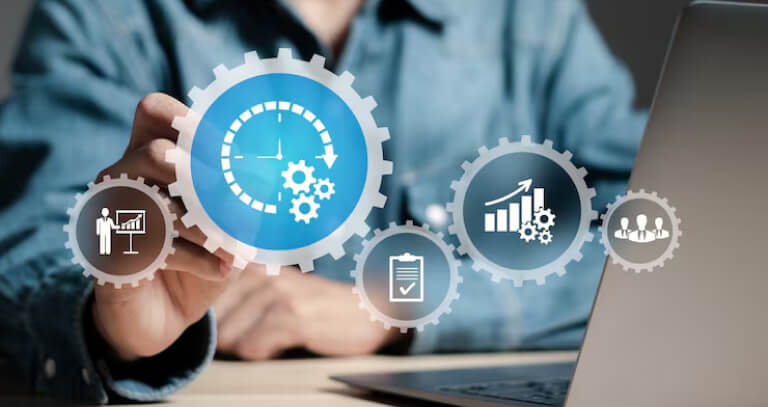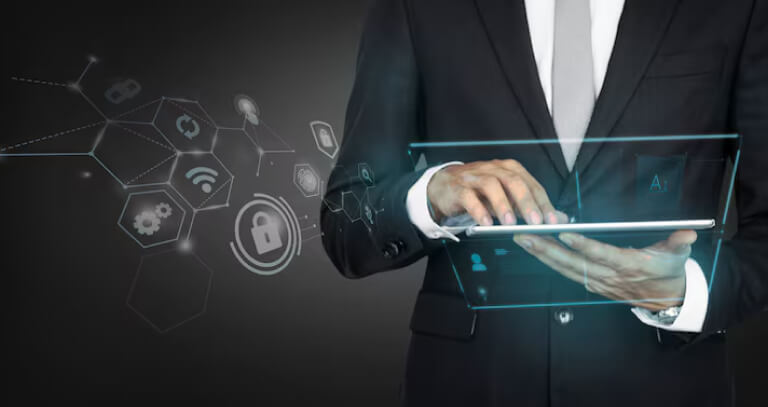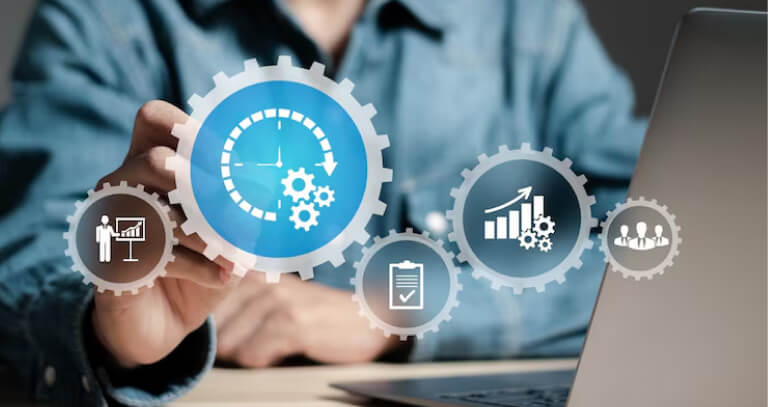AI and IoT Integration in Mining Automation Systems for Future-Ready Operations
Ditstek Blogs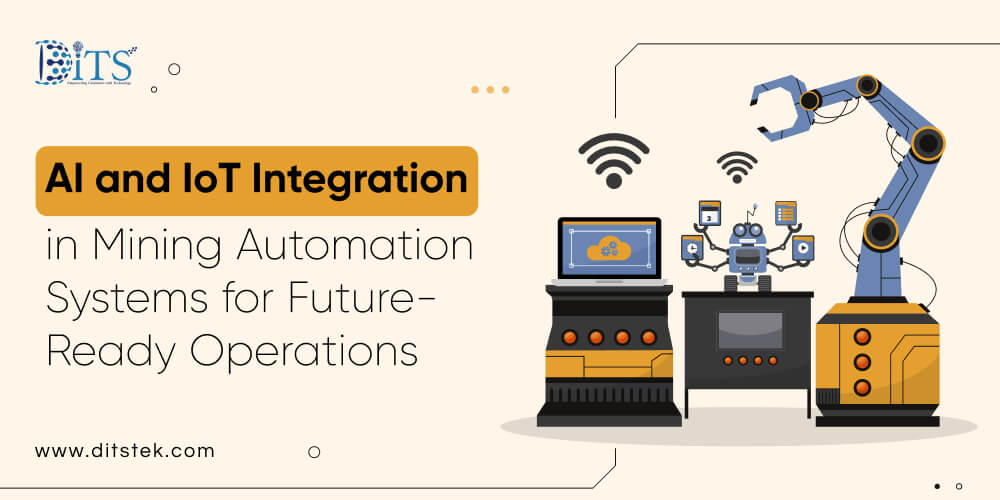
The combination of Artificial Intelligence (AI) and the Internet of Things (IoT) is changing industrial automation. Today, technology is offering tools that mining leaders couldn’t imagine even a decade ago. With the rise of artificial intelligence and IoT for mining industry, operations that once relied heavily on manual oversight are now shifting toward real-time insights and automated precision.
By connecting sensor-rich devices with intelligent analysis, manufacturers can take steps toward more autonomous systems that respond in real time to dynamic situations. However, implementing AI with IoT in industrial settings is not as simple as plugging it in.
In this blog, we will explore the most significant engineering challenges and applications that have emerged from integrating AI and IoT in the mining industry, providing valuable insights.
The Need for Automation in Mining Industry
Mining is a high-stakes business, and a wrong calculation, a safety incident, or a slight lag in equipment can lead to a ripple in the entire operation. As the margins are tight in the mining industry, any type of inefficiency in the process can lead to a loss of margins. That's where the need for automation steps in, and when applied precisely, it can improve efficiency and minimize costs.
As the demand for minerals and batteries powering a wide range of equipment from smartphones to electric cars is rising, its fulfillment depends on the speed at which the resources are extracted from the earth. Manual systems and equipment in mining cannot keep up with the pace.
Next comes the safety of workers and equipment. Mines are among the most dangerous places to work on earth. The risk of accidents, collapses, and toxic gases poses life-threatening risks to workers working in mines.
Another thing to consider is the cost pressure. The use of energy, downtime, and maintenance all lead to expenses, and if they are not optimized, can eat into profits. Automation helps streamline processes, minimize waste and ensure every asset is used to its full potential.
Want Predictive Maintenance That Works?
Learn how AI-powered insights from IoT sensors reduce costly breakdowns, extending equipment life while maximizing production uptime.
Role of IoT in Mining Industry
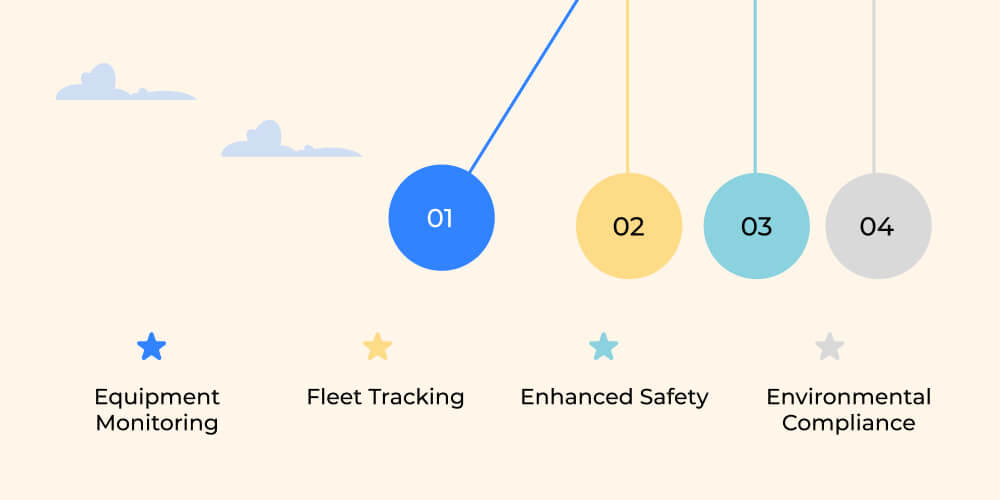
The mines present today are much different from the mines of the past. Earlier mines relied on human oversight, but in the present mines, you will see connected sensors, tracking devices, and smart equipment sending real-time data continuously into a centralized system.
Equipment Monitoring
The greatest advantage is real-time equipment monitoring. It helps mining companies record temperature, vibration levels, or energy use of every critical machine at every possible second. That kind of visibility not only mitigates the chance of breakdowns, but also helps in proactively planning maintenance before issues potentially become downtime.
Fleet Tracking
Fleet tracking is another game-changer. Trucks, loaders, and drillers can all be monitored on fuel efficiency, routes, and performance, which means businesses cut down on waste and squeeze every possible productivity out of assets.
Enhanced Safety
Another essential benefit of IoT is enhancing safety. For example, wearable technology can monitor workers' heart rates, track their location underground, and alert when someone has entered a dangerous area. For managers, this means knowing that workers are not only productive but also protected.
Environmental Compliance
Also, environmental compliance is a critical focus area. In specific industries, IoT systems can measure in real-time dust, water usage, and emissions, allowing compliance with strict regulations, while putting us in a better position to continuously support sustainable practices.
Overall, IoT provides clarity to operations that were once considered disorganized. Rather than questioning what was going on on-site, leaders now have real-time, accurate information to take action on. And in a space where timing and accuracy are crucial, real-time information becomes essential.
Role of AI in Mining Operations
While the Internet of Things connects the mine, IoT devices collect data, and artificial intelligence (AI) puts the data into context. Otherwise, companies would simply be looking at unending rows of numbers with little understanding of what they mean. With AI in mining automation comes realistic, evidence-based approaches to understanding raw data in an actionable way.
For example, consider predictive maintenance. AI algorithms can collect and analyze data from vibration, heat, and usage, and provide forecasts days or even weeks before an equipment failure occurs. All this helps minimize downtime and the likelihood of expensive surprises.
AI is also contributing to exploration. Rather than drilling in the dark, new machine learning models can analyze geological data to support the identification of more accurate and higher-potential sites. This is not only better, but quicker, and reduces wasted time.
Most importantly, AI enhances safety by using feeds from cameras and/or analyzing worker movements or unusual activity to identify risks promptly, thereby assisting in protecting people and assets.
With the use of AI in mining, operations don't just run, but actually improve. AI provides mining companies with the intelligence to react quickly, to adapt to variable conditions, and to improve efficiency throughout the value chain.
How AI and IoT Work Together in Mining Automation
When real-time data is collected using IoT and AI integration, the two technologies create a robust ecosystem. It is here that technology evolves from merely a support tool in the journey of transformation.
As an example, IoT devices may monitor fuel consumption, tire pressure, and drill vibrations as frequently as every second. The actual data is valuable in isolation, but is also limiting. AI is where the magic happens. Data becomes predictive, indicating when to expect a machine to fail, optimizing how a fleet is scheduled, and even identifying safer routes within a mine.
Fleet is a clear example of this concept. IoT devices provide location data and performance, while AI can then take that data and utilize it to forecast delays, balance workloads, and reduce idle time. The result is improved operations with fewer breakdowns and better utilization of capital.
In summary, the combination of AI and IoT creates a loop of efficiency, safety, and profitability, qualities that help mining businesses to adopt business process automation with confidence.
Looking to Cut Mining Costs Smartly?
AI-driven automation helps optimize fleets, reduce fuel waste, and lower emissions, creating both financial and environmental value.
Benefits of AI and IoT Integration for Mining Businesses
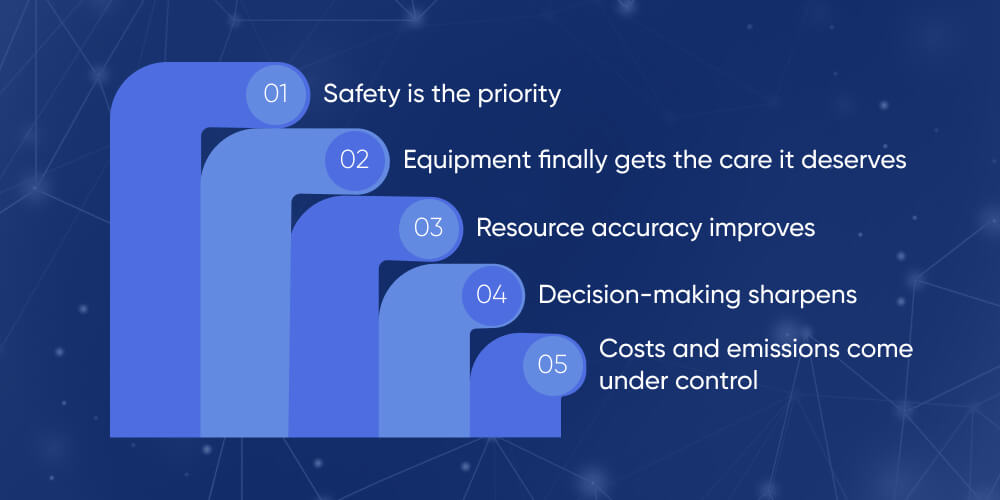
The impact of combining AI and IoT isn't just technical; it shows up on the balance sheet, in board meetings, and in the day-to-day running of a mine.
1. Safety is the priority: Fewer workers in hazardous zones, more early warnings, and smarter oversight mean accidents go down. And in mining, one avoided incident can save lives and millions.
2. Equipment finally gets the care it deserves: Predictive alerts keep machines running longer, while downtime shrinks. That translates into higher utilization rates and lower maintenance bills.
3. Resource accuracy improves: AI-driven analysis of IoT data ensures ore estimates and extraction plans hit closer to reality. No more costly surprises when results don't match projections.
4. Decision-making sharpens: Real-time dashboards provide executives with a clear view of operations, fleet performance, energy usage, and compliance metrics, enabling faster, more confident decision-making.
5. Costs and emissions come under control: Automated adjustments cut fuel waste, optimize energy usage, and lower a mine's environmental footprint. That's not only good for regulators, but it's also good for the company's reputation.
Put simply, this isn't just about machines talking to each other. It's about transforming mining operations into a safer, leaner, and more resilient system for the future.
The Future of AI and IoT in Mining Automation
The mining sector is progressing towards a future quite different from what exists today. Autonomous fleets, once thought to be only theoretical, are already finding their way onto remote sites hauling tons with no driver in sight. With stronger connectivity, specifically with the rollout of 5G, those machines will soon communicate in real-time to optimize their route and workload.
There is also talk of blockchain creeping into mining. Why? To provide transparency of the supply chain from pit to port. Buyers will know precisely where their materials come from, and regulators will have fewer blind spots.
Sustainability is yet another force shaping the future of mining. AI will continue to fine-tune energy usage, and IoT sensors will monitor surface and air quality. Rather than being reactionary to problems, mining companies will have the capability to anticipate and, more importantly, prevent them, providing evidence that efficiency and something as simple as responsibility are not mutually exclusive.
Also note that these systems will not sit idle. The more data gathered, the more intelligent they become. This means that future mining technology will not simply automate, it will evolve continuously - propelling operations to higher productivity and lower risk.
How DITS Can Help Mining Businesses with AI + IoT Integration
Adopting new technology is not just about plugging in devices or installing software, but ensuring that operations work smarter from day one.
We at DITS build custom mining software solutions that connect fleets, equipment, and workforce data into a single system. By customizing the software to specific needs, we offer mining businesses a clear view of operations. This makes it easier to act on insights, not just collect them.
In addition to custom software development, we also offer predictive maintenance. Using AI integration, our software helps mining companies detect early warning signs in heavy equipment to avoid expensive downtimes. With expertise in IoT software development, we make your systems capture the most minor details like fuel usage, vibration patterns, and location data, to produce insights that companies can rely on.
What sets us apart is our consistent use of AI in every step of development, from writing and testing code to tailoring solutions for each client’s specific challenges. In short, we don’t just deliver software. We deliver future-ready mining automation solutions built for safety, scalability, and long-term profitability.
Want to Eliminate Costly Downtime?
Predict equipment failures weeks in advance with AI-driven IoT monitoring, ensuring maximum uptime and reliable mining operations.
Conclusion
Mining stands at an inflection point. An industry that has relied upon manual supervision and reactive repair for decades is transforming to data-based precision and proactive management. The combined power of AI and IoT is not just another level of technology; it's the framework of future-oriented mining operations.
Payoffs for businesses seem straightforward: safer work environments, smarter use of equipment, lower costs, and enhanced compliance. But even more importantly, these systems continue to learn, adapt, and improve for each data point. This is what creates a powerful ally for any industry, particularly an industry with thin margins and high risks.
Companies that want to pursue the shift to data and AI-driven solutions are not just modernizing, but also future-proofing. In mining, the difference between keeping pace and falling behind often comes down to how long it takes a company to deliver a new technology into the field.
FAQs
1. How is AI going to make mining operations more efficient?
AI will assist mining companies in predicting equipment failures, optimizing schedules, analyzing geological data, and improving safety through real-time risk identification.
2. How can IoT create value for the mining industry?
IoT devices will track equipment health, measure incident monitoring, and gather and relay environmental data. This will create a connected smart system to improve visibility and decision-making throughout the mining site.
3. Is it expensive for mining companies to implement AI and IoT together?
Initial costs may be high; however, the long-term benefits, such as reducing unscheduled downtime, minimizing incident risks, and lowering ongoing operational costs, are worth the up-front cost.
4. Can we have mining automation solutions in remote locations?
Yes. New technologies, including 5G connectivity and cloud-based platforms, will scale AI and IoT systems even to harsh environments.
5. How does future mining automation technology differ from mining automation today?
Future mining technologies will work to be adaptive. With AI and IoT connected, systems will learn continuously, self-correct, and drive productivity improvements over time.

Dinesh Thakur
21+ years of IT software development experience in different domains like Business Automation, Healthcare, Retail, Workflow automation, Transportation and logistics, Compliance, Risk Mitigation, POS, etc. Hands-on experience in dealing with overseas clients and providing them with an apt solution to their business needs.
Recent Posts
Get in touch




